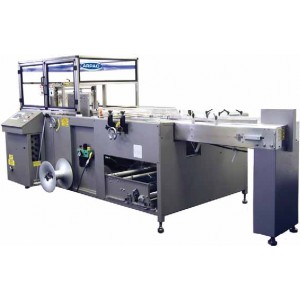Researchers and companies are introducing new improvements of modern packaging technology continually - which can oftentimes cause the task of purchasing packaging equipment an overwhelming task.
 An equipment purchase should reduce your packaging materials, cut production costs and prove an increasing ROI.
An equipment purchase should reduce your packaging materials, cut production costs and prove an increasing ROI.Here are just a few ideas to think about while you are in the process of researching packaging equipment.
Determine the versatility that the products require during the packaging process.
Packaging Europe reported that a new packaging line used with apples recently entered the market with a modular design, allowing it to be adapted in almost any form to better meet different packhouses' requirements.The modular design is a full feeding and flow-wrapping system that requires fewer operators than conventional machines would, simultaneously improving production efficiency and reducing industry costs.
Additional benefits this equipment offered included:
- Ability to handle various products without damage
- Misplaced product detection
- Packaging memory
- Capability to package in varying quantities
- Capability to package in various vessel types
- Varying methods of storing and transporting the product once packaged
The purchase of packaging equipment should work alongside your goals to reduce your packaging materials, cut production costs and prove an increasing ROI.
Is sustainability a goal in your equipment purchase? Consider a biodegradable film.
Industry experts are working on new solutions to improve production reception. One Chilean chemist is working to develop a biodegradable polymeric film for use in the fruit industry, according to Fresh Fruit Portal.
Focusing on the negative impacts of plastic on the environment, Dr. Paula Zapata worked to develop the film to help the industry become more friendly toward conservation. Plastic takes more than a century to decompose on average, about 600 times longer than the fruit it would hold.
"Polymers generally take more than 100 years to biodegrade and they create great socioeconomic and environmental damage, so…why not make a film that can degrade in environmental conditions and that apart from that, serves a function of transport for packing different materials?" Zapata told the news source.
The project was mostly funded by the Chilean Agriculture Ministry's Agricultural Innovation Fund, undertaken at the Universidad de Santiago in the country. Another 10 percent of the funding was supplied by local company BO Packaging S.A., which works to carry out "processing improvements."
Zapata told the news source that the biodegradable polymeric film would serve two purposes:
- Prevention of outside bacteria from access to the product
- Shipping remains environmentally friendly.
The film itself is plastic with natural additives. It will reduce losses that the country experiences in transporting fruit, where as much as 10 percent of the product is lost in international transport. Between the longer-lasting quality of the food and an improved deterioration rate once the film's life cycle is complete, the film is expected to help change the fruit packaging industry for good. Its cost will also not be much higher than current plastic, as current estimates put its potential leaps at only about 5 percent. It should be ready for the market in the next two years.
Need additional food packaging equipment options?
After determining the needs of your packaging operation, begin to access the options available for your equipment purchase. Consider the following suggestions:
- There are numerous packaging manufacturers available. Try searching out their websites. This will give you the most information up front and is easily accessible.
- Trade magazines are a great resource for local listings of new and/or used machinery.
- Check out any food production auctions going on in your area.
- Take some time to compare the prices that you see in the local listings with the equipment you have researched on the manufacturing websites. You want to ensure that the features are akin. Narrow down your purchase to the features that are truly needed for your operation. Remember that you are looking for features that will create consistency in your process and packaging and potentially free up your labor costs for other projects.
- Ask about maintenance. How available are replacement parts? Is a warranty available? Running into maintenance has the probability to run your production into downtime, thus costing consumer confidence and lost orders.


